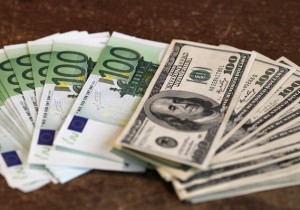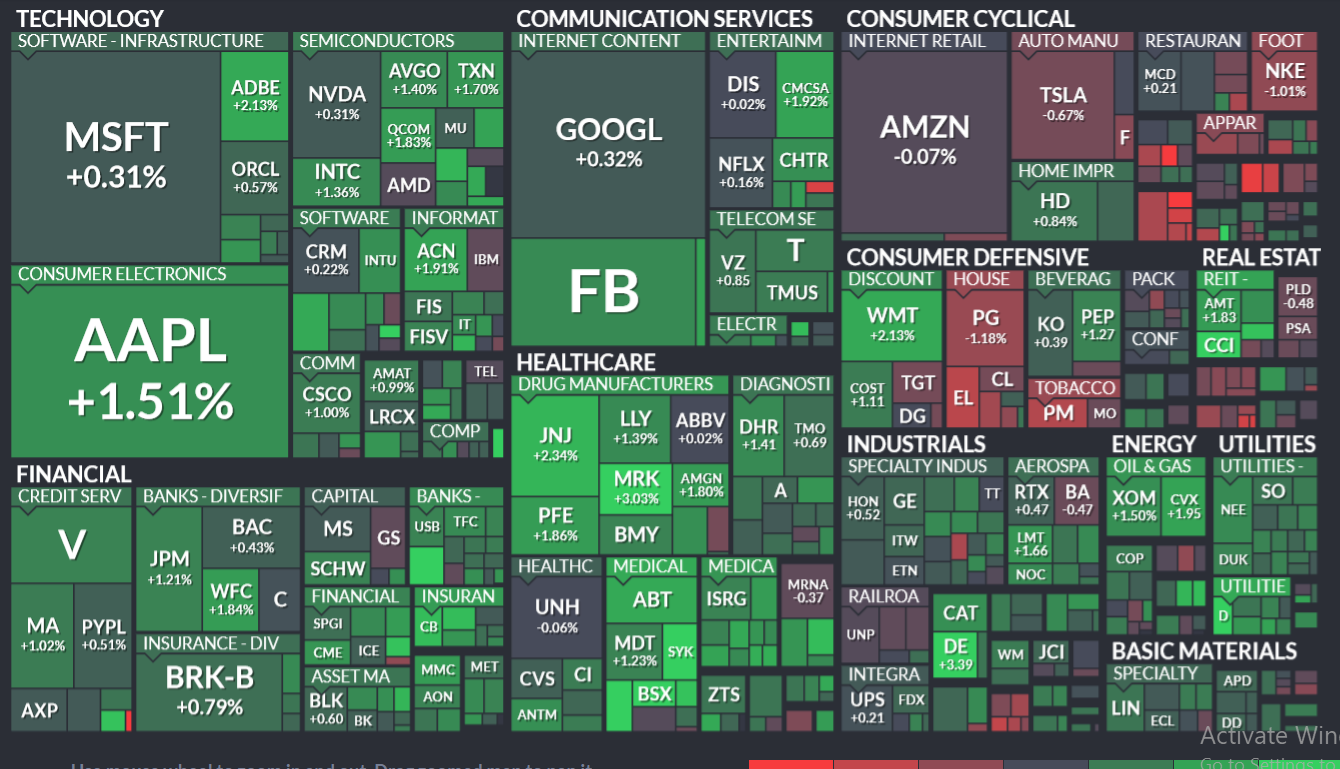 Yesterday’s trade saw EUR/USD within the range of 1.1332-1.1380. The pair closed at 1.1339, ticking down 0.05% on a daily basis. It has been the fifth loss in the past eight trading days. In weekly terms, EUR/USD lost 0.11% last week, following two consecutive weeks of gains. It has been the smallest weekly drop since the week ended on February 22nd, when the pair slipped 0.04%.
Yesterday’s trade saw EUR/USD within the range of 1.1332-1.1380. The pair closed at 1.1339, ticking down 0.05% on a daily basis. It has been the fifth loss in the past eight trading days. In weekly terms, EUR/USD lost 0.11% last week, following two consecutive weeks of gains. It has been the smallest weekly drop since the week ended on February 22nd, when the pair slipped 0.04%.
At 6:21 GMT today EUR/USD was down 0.04% for the day to trade at 1.1336. The pair tested the range support level (S3), as it touched a daily low at 1.1327 at 6:05 GMT.
Today the cross may be influenced by a number of macroeconomic reports and other events as listed below.
Fundamentals
Euro area
ECB decision on policy
At 11:45 GMT the European Central Bank (ECB) is to announce its decision in regard to borrowing costs. The median estimate by experts suggests that the central bank will probably leave its benchmark interest rate intact at the record low level of 0.05% at the policy meeting today. The bank last reduced the refinancing rate by 10 basis points to the current 0.05% at the September 4th 2014 meeting.
At its meeting on September 3rd the central bank kept the marginal lending facility intact at 0.30% and the deposit facility at -0.20%. Since March the bank has been implementing its public and private sector asset purchasing program at the amount of EUR 60 billion per month. It is intended to run until late September 2016, or beyond, in case macroeconomic conditions require it.
According to extracts from the Introductory statement to the press conference, offered by ECB President, Mario Draghi: ”The information available indicates a continued though somewhat weaker economic recovery and a slower increase in inflation rates compared with earlier expectations. However, owing to sharp fluctuations in financial and commodity markets, the Governing Council judged it premature to conclude on whether these developments could have a lasting impact on the outlook for prices and on the achievement of a sustainable path of inflation towards our medium-term aim, or whether they should be considered to be mainly transitory.”
”September 2015 ECB staff macroeconomic projections for the euro area foresee annual real GDP increasing by 1.4% in 2015, 1.7% in 2016 and 1.8% in 2017. Compared with the June 2015 Eurosystem staff macroeconomic projections, the outlook for real GDP growth has been revised down, primarily due to lower external demand owing to weaker growth in emerging markets.”
”The risks to the euro area growth outlook remain on the downside, reflecting in particular the heightened uncertainties related to the external environment. Notably, current developments in emerging market economies have the potential to further affect global growth adversely via trade and confidence effects.”
”Loan dynamics continued to improve. The annual rate of change of loans to non-financial corporations (adjusted for loan sales and securitisation) increased to 0.9% in July, up from 0.2% in June, continuing its gradual recovery since the beginning of 2014. Despite these improvements, the dynamics of loans to non-financial corporations remain subdued. They continue to reflect the lagged relationship with the business cycle, credit risk, credit supply factors, and the ongoing adjustment of financial and non-financial sector balance sheets.”
Short-term interest rates are of utmost importance for the valuation of national currencies. In case the European Central Bank is dovish about inflationary pressure and overall economic activity in the Euro area and, thus, leaves interest rates intact, this will generally have a bearish effect on the common currency.
The interest rate decision is to be followed by the press conference with ECB President Mario Draghi, during which volatility of euro crosses usually heightens. In case Draghi offers a more hawkish tone, the euro will usually receive support, while a more dovish tone will have a bearish effect on the common currency. The press conference is scheduled at 12:30 GMT.
Consumer Confidence – preliminary estimate
Confidence among consumers in the Euro area probably worsened for a second consecutive month in October. The preliminary value of the consumer confidence index probably slid to -7.5 from a final value of -7.1 in September. The latter was a confirmation of the preliminary index reading reported on September 22nd. If so, Octobers value would be the lowest one since January 2015, when the gauge stood at -8.5. The index measures consumer confidence on a scale of -100 to +100. A reading of -100 suggests a lack of confidence, zero means neutrality and a reading of +100 indicates extreme levels of confidence. The index reflects the level of optimism, which consumers have about economic development in the region. The Business and Consumer Survey is conducted by phone and includes 23 000 households in the Euro area. The questions asked stress on current economic and financial situation, savings intention and also on expected developments regarding consumer price indexes, general economic situation and major purchases of durable goods. This indicator is one of the five major components, that comprise the Economic Sentiment Indicator (ESI).
Lower confidence usually implies lesser willingness to spend, including large-ticket purchases, while consumer spending is among the key factors driving economic growth. Therefore, in case the consumer confidence index dropped more than anticipated, this would cause a moderate bearish impact on the euro. The European Commission is expected to release the preliminary reading at 14:00 GMT.
United States
Initial, Continuing Jobless Claims
The number of people in the United States, who filed for unemployment assistance for the first time during the business week ended on October 16th, probably increased to 265 000, according to market expectations, from 255 000 in the previous week. The latter has been the lowest number of claims since the business week ended on July 17th, when 255 000 claims were reported. It has also been the lowest level since November 1973.
The 4-week moving average, an indicator lacking seasonal effects, was 265 000, marking a decrease of 2 250 compared to the preceding weeks revised down average. It has been the lowest level for this average since December 15th 1973, when 256 750 claims were reported.
The business week, which ended on October 9th has been the 32nd consecutive week, when jobless claims stood below the 300 000 threshold.
Initial jobless claims number is a short-term indicator, reflecting lay-offs in the country. In case the number of claims met expectations or increased further, this would have a moderate bearish effect on the US dollar.
The number of continuing jobless claims probably increased to the seasonally adjusted 2 188 000 during the business week ended on October 9th, from 2 158 000 in the prior week. It has been the lowest number of claims since November 4th 2000, when a level of 2 110 000 was reported. It also represented a drop by 50 000 compared to the revised up number of claims reported in the week ended on September 25th. This indicator reflects the actual number of people unemployed and currently receiving unemployment benefits, who filed for unemployment assistance at least two weeks ago.
The Department of Labor is to release the weekly report at 12:30 GMT.
Existing Home Sales
The index of existing home sales in the United States probably rose 1.0% to a level of 5.38 million in September compared to August, according to the median estimate by experts. In August sales were 4.8% lower from a month ago to reach 5.31 million, or the lowest level since April 2015 (5.04 million).
The sample of data encompasses condos, co-ops and single-family houses. Statistical data on existing home sales are often used along with statistical figures regarding the new home sales and pending home sales, with the major objective being to draw a conclusion how the nation’s housing sector is performing, regardless of interest rates.
The report on existing home sales usually does not cause a real direct impact on US economy. Actually, this effect appears to be minimal, due to the fact that nothing is produced with the mere sale of an existing home. In terms of economic activity, the sale of an existing house may be related only to interior design and purchases of new furniture.
In case the index increased at a steeper monthly rate than anticipated, this would have a limited bullish effect on the US dollar. The National Association of Realtors (NAR) is to release the official figure at 14:00 GMT.
CB Leading Indicator
The Conference Board Leading Economic Index for the United States probably remained unchanged in September compared to a month ago, according to the median estimate by experts. In August the index rose at a monthly rate of 0.1%.
It encompasses a variety of economic indicators, which signify possible changes in overall economic activity. The index is comprised by the following components: average weekly hours in manufacturing, average weekly initial claims for unemployment insurance, manufacturers’ new orders, consumer goods and materials, ISM Index of New Orders, manufacturers new orders, non-defense capital goods excluding aircraft orders, building permits, new private housing units, Stock prices, 500 common stocks, Leading Credit Index, interest rate spread, 10-year Treasury bonds less federal funds, average consumer expectations for business conditions. Worse-than-expected performance of the index would have a moderate bearish effect on the US dollar. The Conference Board research group will release the official data at 14:00 GMT.
Bond Yield Spread
The yield on German 2-year government bonds went as high as -0.226% on October 21st, or the highest level since September 25th (-0.226%), after which it slid to -0.254% at the close to lose 2 basis points (0.02 percentage point) compared to October 20th. It has been the sixth drop in the past eight trading days.
The yield on US 2-year government bonds climbed as high as 0.641% on October 21st, or the highest level since October 12th (0.641%), after which it fell to 0.625% at the close to lose 0.008 percentage point compared to October 20th. It has been the sixth decline in the past eight trading days.
The spread between 2-year US and 2-year German bond yields, which reflects the flow of funds in a short term, expanded to 0.879% on October 21st from 0.867% on October 20th. The October 21st yield spread has been the largest one since October 12th, when the difference was 0.892%.
Meanwhile, the yield on German 10-year government bonds soared as high as 0.639% on October 21st, or the highest level since September 28th (0.650%), after which it slid to 0.572% at the close to lose 5.8 basis points (0.058 percentage point) compared to October 20th. It has been the first drop in the past three trading days.
The yield on US 10-year government bonds climbed as high as 2.072% on October 21st, after which it slipped to 2.021% at the close to lose 4.8 basis points (0.048 percentage point) compared to October 20th. It has been the fifth drop in the past eight trading days.
The spread between 10-year US and 10-year German bond yields widened to 1.449% on October 21st from 1.439% on October 20th. The October 21st yield difference has been the largest one since October 19th, when the spread was 1.454%.
Daily and Weekly Pivot Levels
By employing the Camarilla calculation method, the daily pivot levels for EUR/USD are presented as follows:
R1 – 1.1343
R2 – 1.1348
R3 (range resistance) – 1.1352
R4 (range breakout) – 1.1365
S1 – 1.1335
S2 – 1.1330
S3 (range support) – 1.1326
S4 (range breakout) – 1.1313
By using the traditional method of calculation, the weekly pivot levels for EUR/USD are presented as follows:
Central Pivot Point – 1.1392
R1 – 1.1450
R2 – 1.1555
R3 – 1.1613
S1 – 1.1287
S2 – 1.1229
S3 – 1.1124





